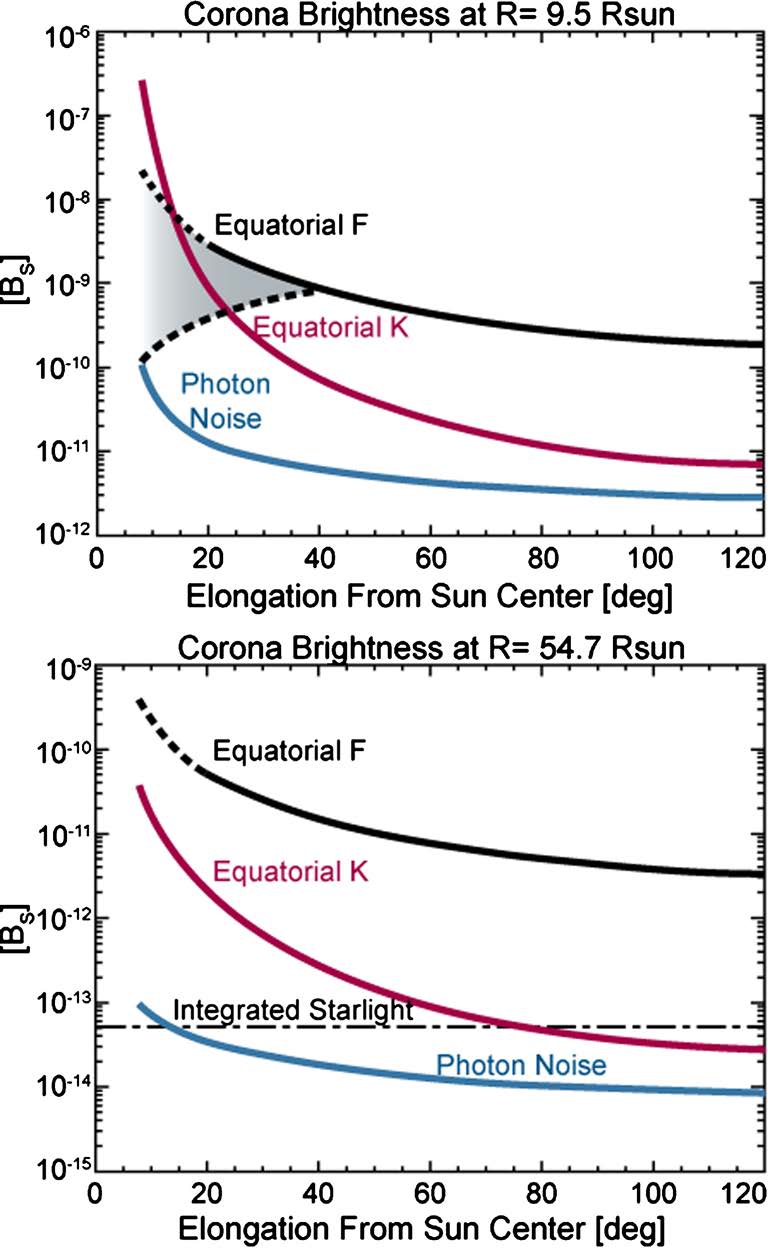
‘What is the nature of dust–plasma interactions and how does dust modify the spacecraft environment close to the Sun?’
As discussed by Mann et al. (2004), forward scattering washes out the small-scale structure of the corona as well as any information on short-term variability within 0.3 AU from the Sun. Thus, we have no knowledge of the effects of CMEs or sungrazer comets on the dust dynamics near the Sun. WISPR will obtain the first reliable measurements of the F-corona brightness gradient within the first few degrees from the Sun and will observe the evolution of sungrazer (and other comet types) tails within its large FOV.
LASCO observations show that sun-grazing comets occur on average every 2–3 days and their brightness peaks at 10–14 Rs (Knight et al. 2010), right in the middle of the WISPR FOV during close perihelia. Although it is clear they do not survive their perihelion, the actual distance at and process through which their nucleus is disrupted remain unresolved. Most of the sungrazers dim below detection at around 7 Rs and may be completely destroyed by 3 Rs, as a handful of UVCS observations suggest (e.g., Bemborad et al. 2005). Furthermore, Kimura et al. (2002) have suggested that sungrazers should exhibit a second brightness peak at 4–6 Rs due to the sublimation of crystalline and amorphous pyroxenes. WISPR will have the sensitivity, spatial coverage, and cadence to resolve these issues albeit based on a smaller sample of comets than LASCO or SECCHI due to the SPP orbit and operational restrictions.
These comets deposit dust into the near-Sun environment but because of their highly inclined orbits, the dust from their tails must leave the ecliptic quickly. Mann et al. (2004) reached the conclusion that the sun-grazer contribution to the near-Sun dust is negligible but their estimates were based on mass and size distributions derived from SOHO measurements at 1 AU (Sekanina 2001). The actual dust flux and size distribution are unknown and analysis of theWISPR observations is required to determine accurately the contribution of sun-grazer comets to the dust environment.
As discussed above, current F-coronal models are unreliable close to the Sun, but the F-corona brightness must start to roll over, perhaps inside 0.1 AU, due to the increased radiation pressure, evaporation, and Lorentz forces acting on the particles. This effect will be readily detectable by WISPR and will further enhance the quality of the coronal imaging (Fig. 7). Additionally, the radial distances where these processes act on is a function of the particular chemical composition of the species (Mann et al. 2004). So the combination of theWISPR observations with modeling of the dust composition should allow the estimation of the size distribution of the dust in the inner heliosphere. The improvement in the clarity, sensitivity and spatial resolution of the F-corona images combined with the repeated passages over a large part of the cycle will provide the first opportunity to study the short-term (days to years) evolution of the dust and investigate whether CMEs interact in any significant way with the interplanetary dust and whether we can use this interaction to probe the CME magnetic fields, as suggested by Ragot and Kahler (2003).
